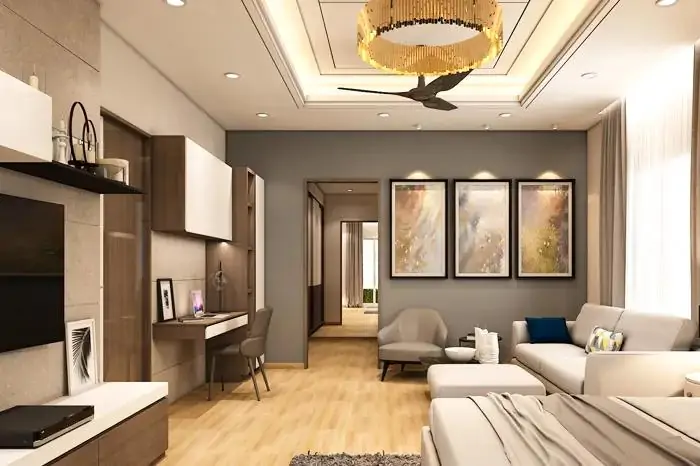
Ensuring effective water management around your property is increasingly crucial in an era marked by unpredictable weather patterns. Challenges arising from insufficient drainage, such as flooding, erosion, and potential home foundation damage, highlight the necessity for proactive measures.
Recognizing the Significance of Water Drainage:
Before diving into solutions, it’s essential to understand the critical role proper water drainage plays.
Stagnant water near your home has the potential to weaken soil integrity, erode landscaping, and compromise your property’s structural integrity. Moreover, accumulated water creates breeding grounds for pests like mosquitoes, posing health risks to the environment.
“Enhancing Property Resilience: Innovative Water Drainage Solutions”
Efficient water drainage solutions play a pivotal role in maintaining the integrity of your property. By implementing effective measures, such as optimizing gutter systems and grading landscapes appropriately, you can mitigate the risks posed by water accumulation. Investing in French drains, rain barrels, or professional assessments ensures a comprehensive approach to safeguarding against potential water-related issues. These proactive steps not only prevent flooding and erosion but also foster a secure and dry environment, bolstering your property’s long-term resilience.
Maintaining Gutters and Downspouts:
Keeping gutters and downspouts in good condition is a simple yet effective water drainage solution. Regularly clear gutters to prevent debris buildup, which can obstruct water flow. Extending downspouts away from the foundation, directing water at least 3 feet away, prevents water accumulation around your home.
Land Grading:
Properly grading your landscape is fundamental for efficient water drainage. Ensure your land slopes away from your home to direct water towards appropriate drainage areas. This prevents water pooling near the foundation and encourages outward flow.
Implementing French Drains:
French drains, comprising a perforated pipe surrounded by gravel, redirect water away from specific areas. Particularly useful in areas prone to excess water, installing a French drain can eliminate standing water in your yard effectively.
Utilizing Swales:
Swales, shallow open channels, help manage water flow in a specified direction. Strategically incorporating swales into your landscape effectively guides water away from sensitive areas, preventing erosion and encouraging water absorption.
Adopting Rain Barrels:
Rainwater harvesting using rain barrels is an eco-friendly water drainage solution. Connect rain barrels to downspouts to collect rainwater for non-potable purposes like watering plants. This not only reduces reliance on municipal water but also prevents excess water accumulation.
Regular Maintenance:
Consistent maintenance ensures the effectiveness of any drainage solution. Keep gutters, downspouts, and drainage systems in check, addressing issues promptly. Regularly inspect and adjust your landscape’s grading to maintain proper water flow.
Professional Assessments:
While many solutions are DIY-friendly, seeking professional advice can be crucial. Consulting landscaping or drainage experts for property assessments can provide tailored solutions for a more comprehensive approach to water drainage.
Installing Sump Pumps:
Homes prone to basement or crawl space flooding benefit from sump pumps. These pumps efficiently remove excess water from a designated sump basin, preventing foundation water damage. Regular testing and maintenance ensure optimal functionality.
Embracing Green Roofs:
Green roofs, covered with vegetation, offer innovative water drainage solutions and environmental benefits. Vegetation absorbs rainwater, reducing runoff and providing home insulation. Despite higher initial costs, their long-term advantages make them sustainable choices.
Directing Water with Berms:
Strategic placement of raised soil mounds (berms) redirects water flow. Creating berms along natural landscape contours channels water away from vulnerable areas while enhancing visual appeal.
Selecting Smart Landscaping:
Choosing native plants with deep root systems contributes to effective water drainage. These plants stabilize soil, absorb excess water, prevent erosion, and foster a healthier ecosystem, thriving in local climates.
DIY Rain Chains:
Enhance your property’s aesthetics while addressing water drainage by installing a DIY rain chain. This decorative alternative to traditional downspouts guides water in a visually pleasing manner, adding both functionality and beauty to your home.
Educating Yourself:
Understanding local climate and drainage patterns aids in implementing effective solutions. Familiarize yourself with the area’s topography, identifying potential water accumulation sources. Informed decisions ensure suitable water drainage solutions for specific circumstances.
In Conclusion: Taking Control of Water Management:
Managing water drainage around your property is about creating a secure and sustainable living environment. Whether opting for simple DIY solutions or seeking professional interventions, each step contributes to property resilience.
FAQs:
Why is proper water drainage essential for my property?
Efficient water drainage safeguards your property from potential damage, including flooding and erosion, ensuring the longevity of your home’s structure.
Can I implement these drainage solutions myself?
Many solutions, such as maintaining gutters and adjusting land grading, are DIY-friendly. However, for complex interventions, consulting experts ensure optimal results.
Are these solutions environmentally friendly?
Absolutely. Solutions like rain gardens and green roofs not only address water drainage but also promote sustainability and ecological balance by reducing runoff and supporting the environment.









